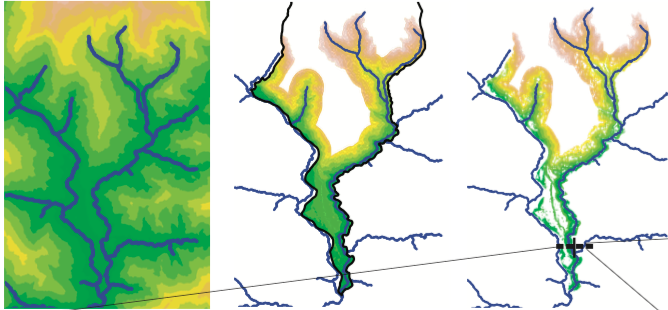New paper: Bridging the information gap: A webGIS tool for rural electrification in data-scarce regions
 Saturday, March 19, 2016 at 10:33AM
Saturday, March 19, 2016 at 10:33AM 
Müller, M F, S E Thompson, and M Kelly. 2016. Bridging the information gap: A webGIS tool for rural electrification in data-scarce regions. Applied Energy 171(1): 277-286
Rural electrification in developing countries is often hampered by major information gaps between local communities and urban centers, where technical expertise and fund- ing are concentrated. The tool presented in this paper addresses these gaps to support the implementation of off-grid micro hydropower infrastructure. Specifically, we present a method to site, size and evaluate the potential for micro hydropower based on re- mote sensing data. The method improves on previous approaches by (i) incorporating the effect of hillslope topography on the optimal layout of the infrastructure, and (ii) accounting for the constraints imposed by streamflow variability and local electricity demand on the optimal size of the plants. An assessment of the method’s performance against 148 existing schemes indicates that it correctly identifies the most promising locations for hydropower in Nepal, but does not generally reproduce the specific design features of constructed plants, which are affected by site-specific constraints. We develop a proof-of-concept computer tool to explore the potential of webGIS technology to account for these constraints by collecting site-specitic information from local users. Journal link.
Keywords: Micro hydropower, WebGIS, Nepal, DEM
 gis,
gis,  modeling,
modeling,  participatory,
participatory,  watershed
watershed 

